We drive through an old stone gate and down a narrow winding road under a tunnel of trees wondering if we’ve got it completely wrong. The GPS had already led us astray a couple of times on the long journey. This is the type of setting where you’d expect to find a Bond villain’s lair, not the home of Atherton Bikes.
At last, the trees clear and the road ends in the middle of a small industrial estate nestled in Wyastone Woods, an old deer hunting ground deep in Herefordshire and a stone’s throw away from South Wales. Round the back of the nearest building a small flight of steps leads down to a door with a tiny Atherton Bikes sticker next to the buzzer. We’ve made it to the right place. Breathing a sigh of relief, we press the button.
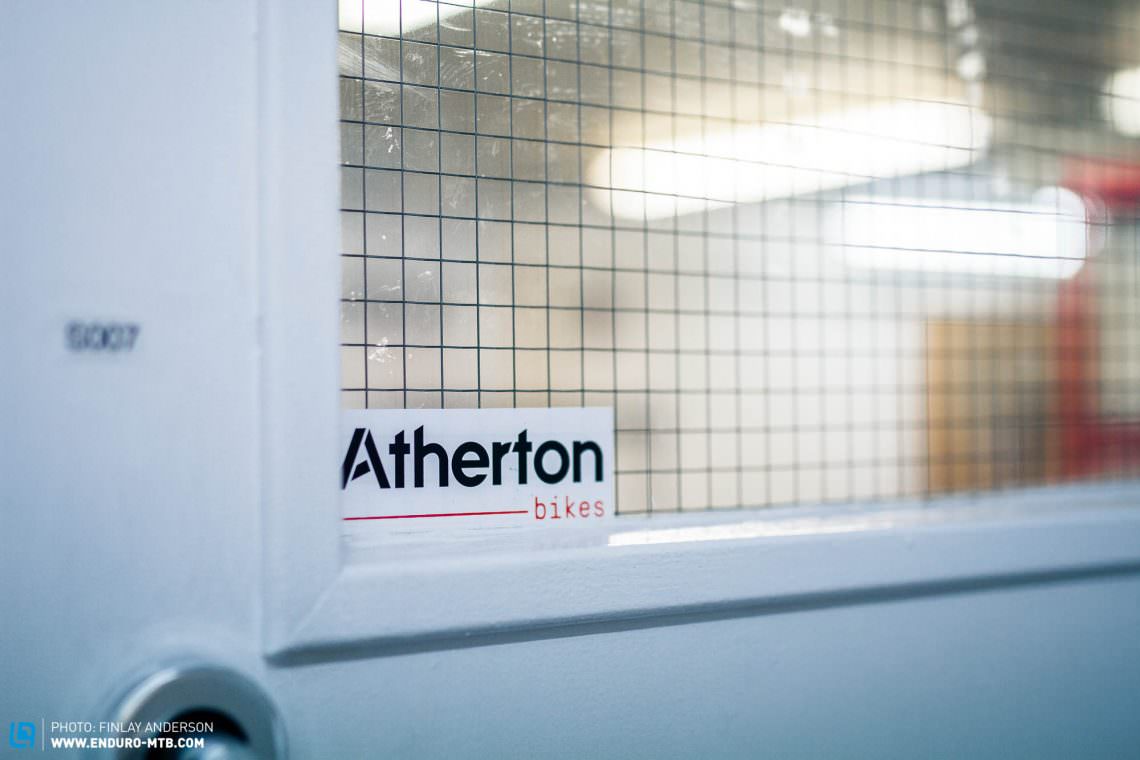
The Atherton family are stalwarts in the mountain biking scene, but the announcement of their new venture, Atherton Bikes, at the beginning of 2019 was relatively unexpected. At the time, details were scarce, but we now know that they are using additive manufacturing to create their own bikes. However, Atherton Bikes aren’t the first to use this construction technique to produce mountainbike frames. A company formerly known as Robot Bike Co exploded onto the scene just over three years ago, however, with a frame price of £4,395 we did not see many of them out on the trails. Atherton Bikes have now taken over from where Robot left off, and the new company is using their racing experience to push this technology further. We’re excited to see if the family can bring this forward-thinking production process to the masses.
The door is answered by a friendly face. Dan Brown, known as Brownie, is the director of Atherton Bikes and welcomes us in with a smile. “You found the right door then?” he asks. “The place next door makes Christmas jumpers. I guess you could say it’s a seasonal business.” We laugh and enter the Atherton Bikes workshop, where we’re about to witness something few people have ever seen before!
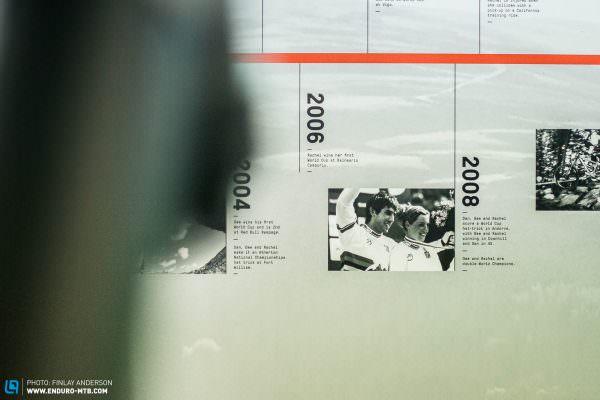
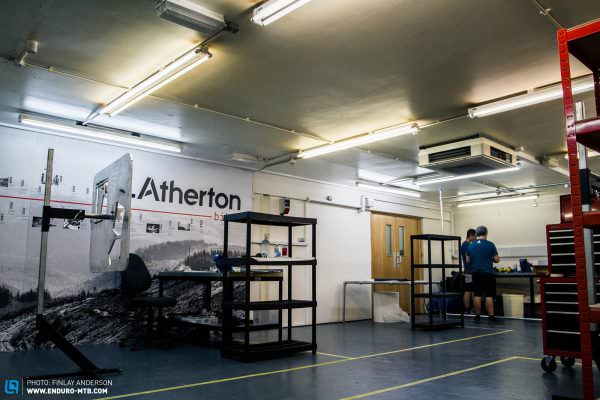
Behind the door is a small, bright room. In the middle, a large metal frame jig hangs ominously on a tough-looking stand, ready to for the creation of the next Atherton frame. On the right side of the room is a workbench. Laid out on top of it like a selection of surgical implements are distinctive pieces of metal – custom, 3D printed, titanium lugs that form the heart of Atherton Bikes’ unique technology. The lugs in front of us will be built up in to a new Atherton Bikes A.150 29er frame right in front of our eyes.

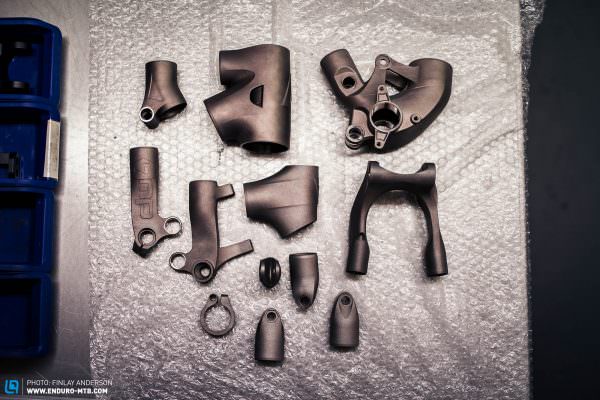
The titanium lugs are made by Renishaw Engineering, a specialist engineering company that more commonly works within sectors such as aerospace and Formula 1. It takes 16 hours and 3500 layers of titanium powder to create a set of lugs for a single frame. The titanium powder is sintered – effectively melted and fused by high powered lasers, layer by layer until the lugs are built up.
This unique technique comes with two clear advantages. Firstly and most importantly it gives Atherton Bikes the ability to create custom geometries. In simple terms, the CAD model of the lugs can be updated automatically when fed with custom geometry and then manufactured specifically for that build. Secondly, it allows the shape of the lugs to be optimised for strength, as their shape is not constrained by traditional manufacturing techniques. Another benefit of this in-house construction is its environmental friendliness. These frames are made to order in the UK, which eliminates the risk of over-production resulting in excess batches of mass produced frames.

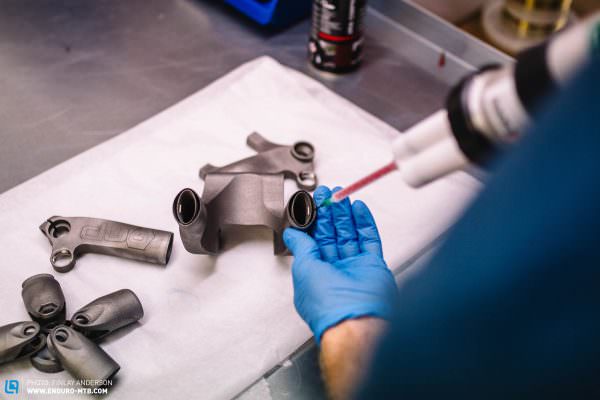
This all means that Atherton Bikes can offer a bike that is designed for you, the customer. You will be able to choose between a geometry created by an online configurator that generates a geometry based on your key measurements (height, arm span and inside leg) or, if you choose to do so, you can pick up the phone and go fully custom. Atherton Bikes let you have the geometry of your choice at a modest extra cost.
This is the real beauty of additive manufacturing – the flexibility and relative ease with which custom geometries can be offered. However, if you would rather not go down the fully custom route, the online configurator has been developed and tuned by the Atherton’s, meaning modern and capable geometry is on the menu. Although pricing has not been finalised yet, we were told that the frames will be competitive with the big brands on the market who offer high-end carbon frames.
Either way, the lugs are printed at Renishaw before being heat-treated, having bottom bracket threads cut and surfaces such as bearing faces machined to final spec. Finally, they are brought to the workshop for assembly.
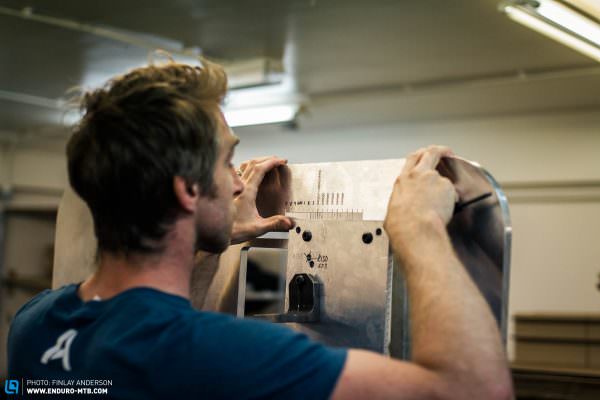

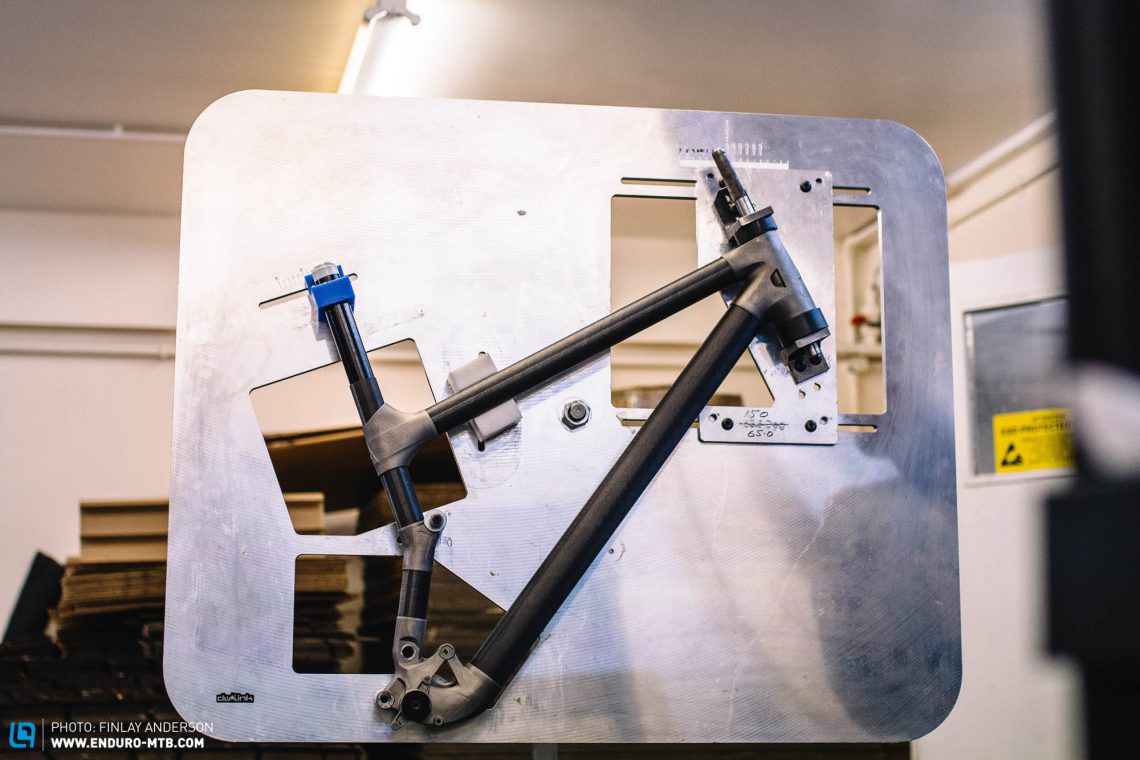
The assembly process is broken down into several stages. First, the individual lugs are meticulously cleaned to remove any residue or contamination. This ensures the surfaces are properly prepared to form a strong bond with the carbon frame tubes.
The next step is cutting the frame’s carbon tubes to length. The tubeset in front of us is being prepared for Atherton Racing rider, Charlie Hatton. The team uses specifically designed tubing made from unidirectional prepreg carbon fibre. We’re told that two different types of carbon are used in different load-bearing areas of the frame to provide stiffness and flex where needed.
Once the lugs are clean and the carbon is cut, frame assembly begins. “You have to build them from the bottom up,” says Rob. “The tubes only match the metal lugs if they are put together that way. It’s a bit tricky at first but you get the hang of it,” he tells us. Piece by piece a new frame is born. It is a spectacular sight, numerous pieces of titanium and carbon fitting together in harmony to create a frame. It’s like watching a complex puzzle come together!
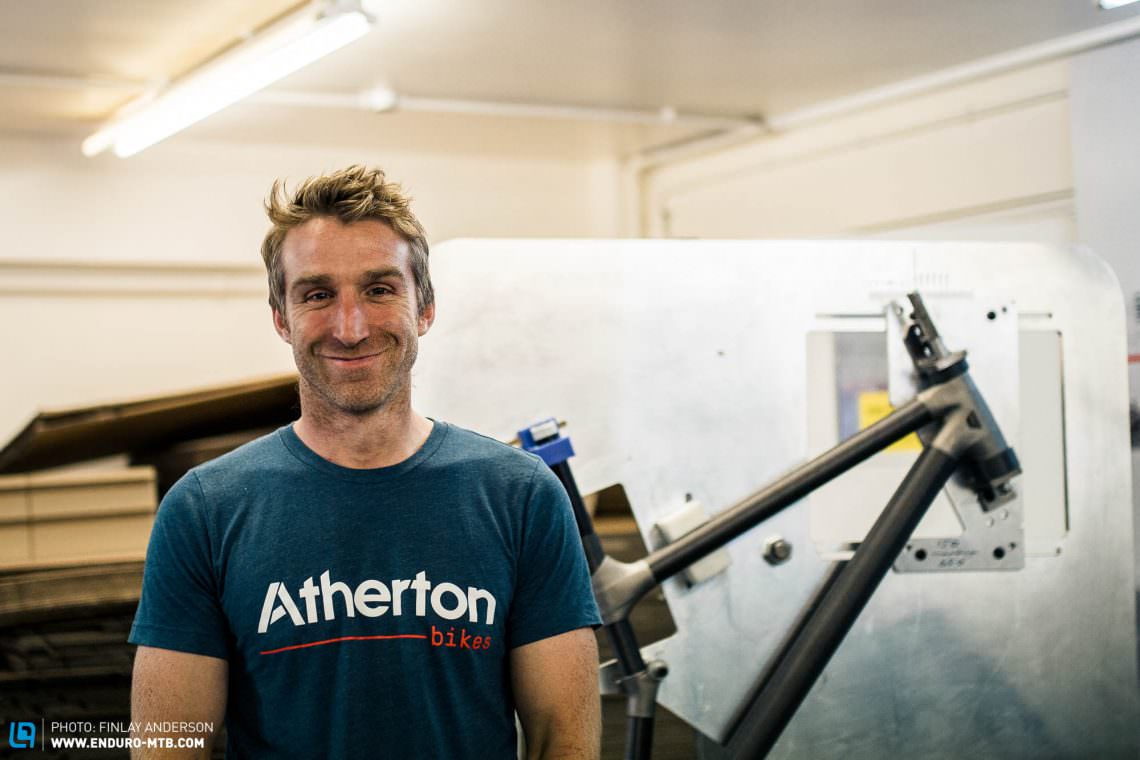
Every frame is assembled in a dry run first (without bonding agent) and all the measurements and angles are compared to the engravings in the baseplate. If everything matches up, it’s time to move on to the bonding. The bonding process is critical – once started, you have to follow through and finish it within the working time of the glue. The job takes a number of hours to complete, but once this crucial step is finished a curing time of 4–5 days is all that is required before the frame is ready to shred.
Next on the agenda is seeing and riding two complete bikes. Brownie tells us we will get to ride both the A150 29er and the A160 27.5” trail bikes. However, both rigs are still prototypes: the team are experimenting with stiffening the chainstays and finalising some other small details. Luckily, when it comes to testing and R&D, there are few places that are more suitable than the Atherton family’s own stomping ground.

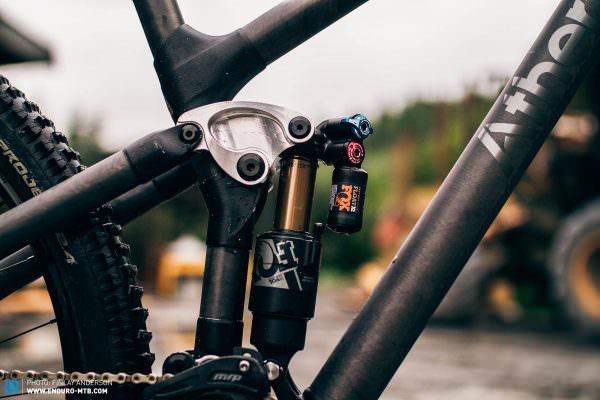
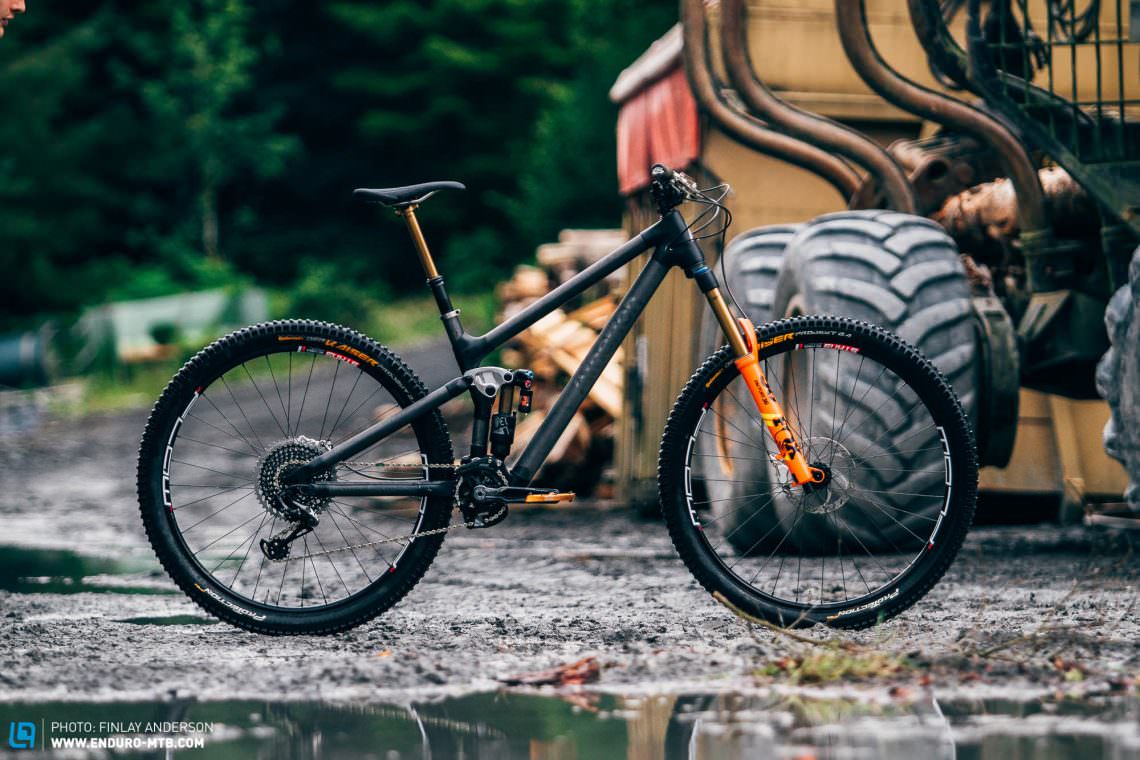
Located a couple of hours drive from Wyastone along beautiful country roads and over several mountain passes, lies Dyfi Bike Park. We pull up in the forest car park next to a monstrous black Land Rover which towers high above our hatchback. Dan Atherton (the oldest of the Atherton siblings and creator of Dyfi Bike Park) hops out of the Landy and welcomes us with a firm handshake. “Welcome to Dyfi!”
Another Land Rover rolls up pulling a trailer. On it are four distinctive bikes. “Ready for some laps?” asks Dan and hops into the back. After a couple of runs, it is clear to see how this place has helped to shape the bikes we are riding. The trails are rough, technical and fast and these bikes allow a type of white-knuckle speed that we don’t often experience. The geometry is capable and balanced. The suspension feels supple, but ramps up towards the end stroke making both bikes coil shock compatible. The slightly rearward axle path of Dave Weagle’s DW6 link gives both bikes great speed through rough sections as their rear wheels can move backwards slightly when hitting obstacles. This prevents the bikes from hanging up on square-edged impacts.
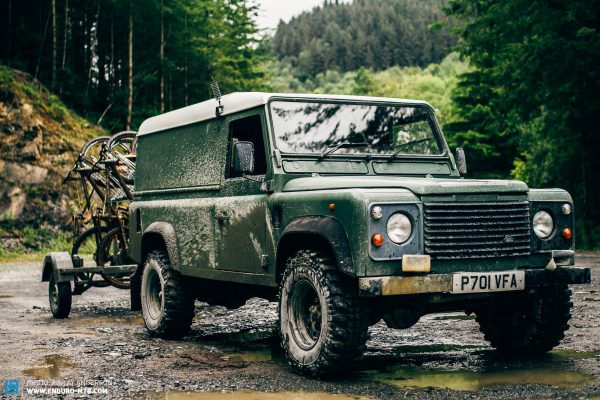
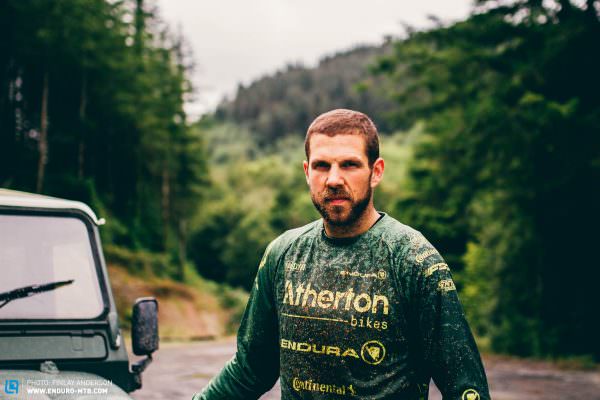
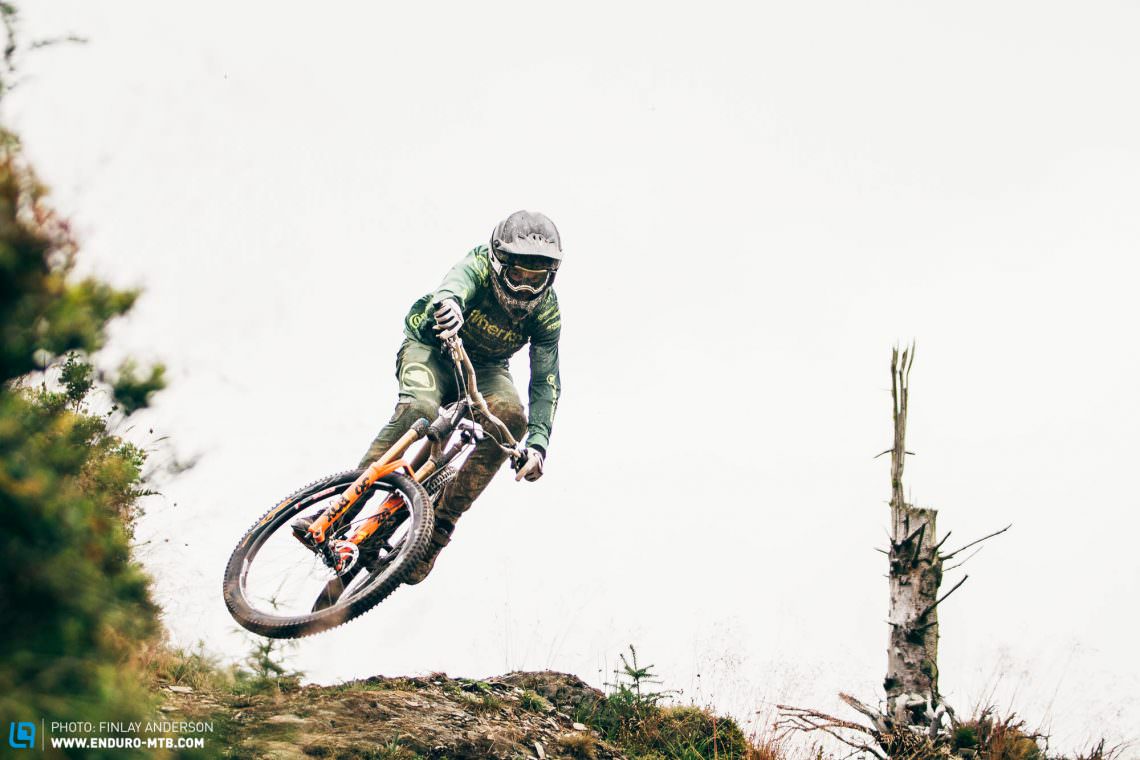

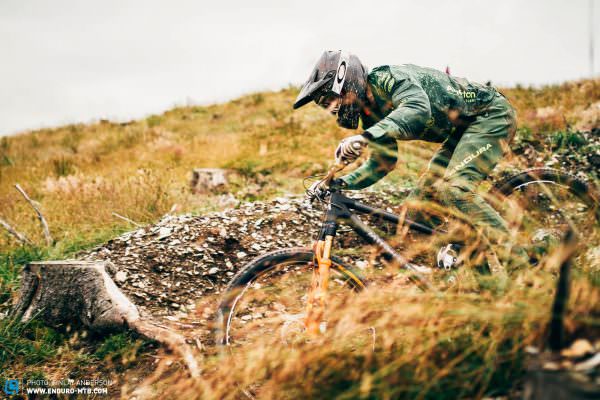
A handful of runs are not enough for a final review, but on first impression it is clear that Atherton Bikes mean business – these bikes are fast and capable. Unfortunately, we’re not allowed to take a bike home for review until they are production ready. However, you can bet we’ll be smashing out test laps on an Atherton Bikes sled at the first chance we get! We can’t wait!
As the high-paced day draws to an end we finally get the chance to reflect on what we have witnessed in the last 12 hours. Is additive manufacturing the future? The ability to create bikes to order rather than shipping massive batches from overseas is certainly a big step in the right direction when it comes to sustainability, and the custom geometry option will appeal to a lot of keen riders. Only the future will tell if Atherton Bikes can make it work, and we are looking forward to seeing what is in store for them!
For more information head to athertonbikes.com
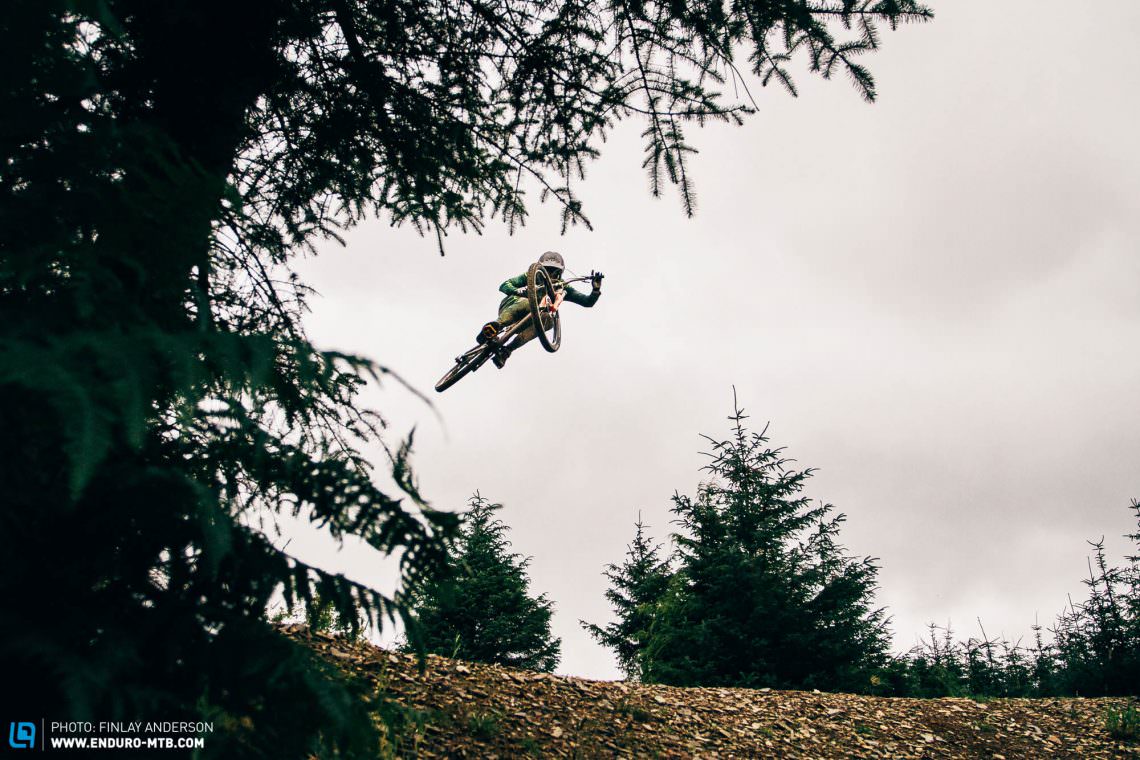
Did you enjoy this article? If so, we would be stoked if you decide to support us with a monthly contribution. By becoming a supporter of ENDURO, you will help secure a sustainable future for high-quality mountain bike journalism. Click here to learn more.
Words & Photos:









